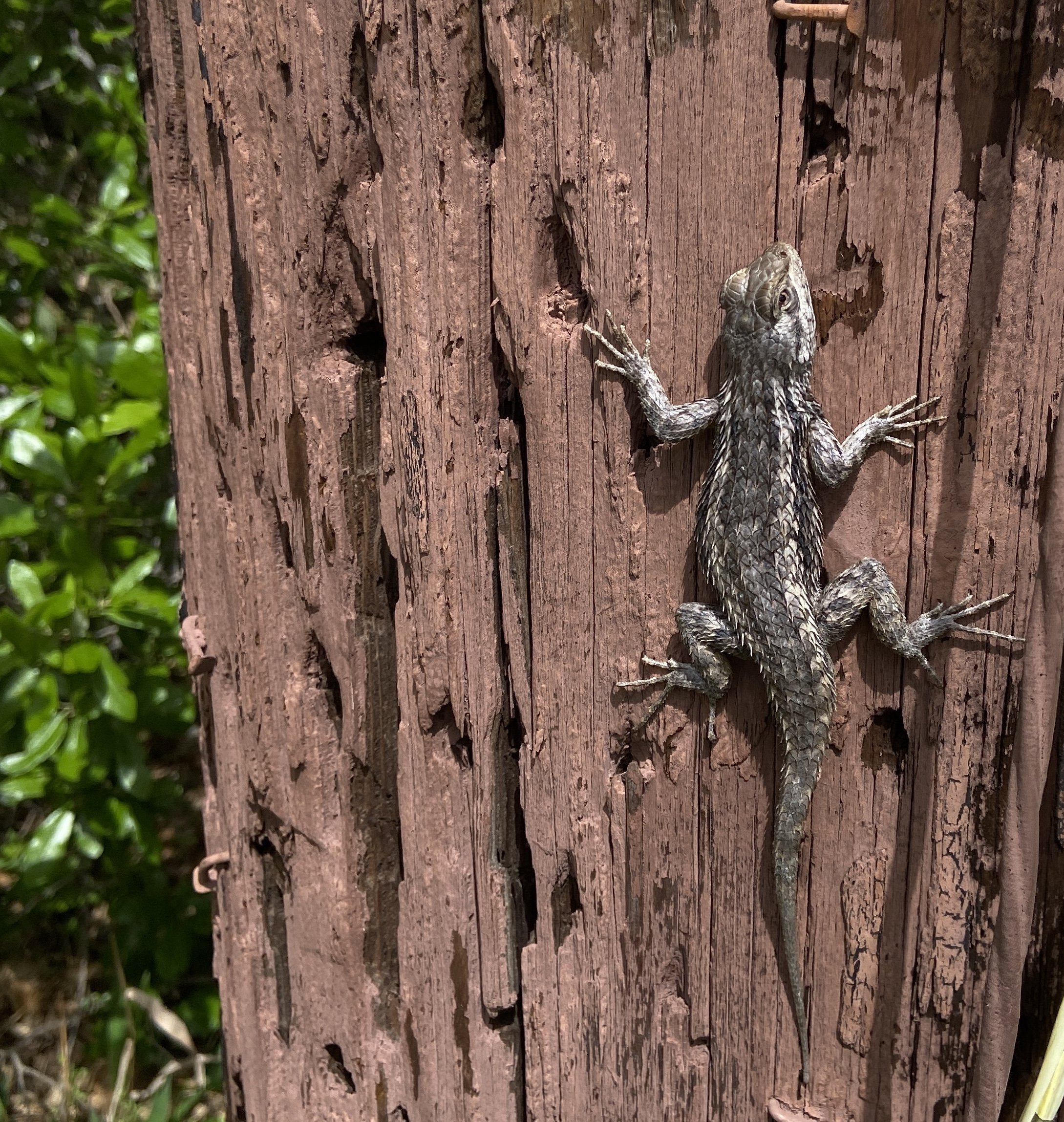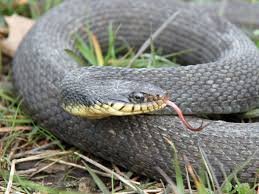REPTILES AND AMPHIBIANS
TEXAS SPINY LIZARD
Texas Spiny Lizards (scientific name: Sceloporus olivaceus) are small lizards native to the south-central United States and are one of the most commonly seen lizards in Texas, often found in trees or on fences. Typically shy and nervous, when approached they will usually retreat up a tree or flee noisily through leaf litter on the ground. They are insectivorous and eat a variety of beetles and other insects.
Adults are 7.5-11 inches in total length and are typically grey in color with black, white, or red-brown blotching down the back. Patterns vary greatly by locality, but the colors and pattern typically serve to be adequate camouflage against the bark of trees in its chosen habitat. The underside is usually uniformly light grey in color, but males typically have blue patches on either side of the belly. Their scales have a distinctly spiny texture to them. They have long toes and sharp claws suited to climbing.
GULF COAST TOAD
The Gulf Coast Toad (scientific name: Incilius valliceps) is a medium sized toad species. Its back varies in color from nearly black to shades of brown and grey with a distinctive white or yellowish stripe down the center, and they sometimes have lighter-colored patches on the sides. Its underside is yellow or cream-colored. Its back is covered in small bumps.
Like most toads, the Gulf Coast Toad is an opportunistic carnivore. It will eat almost any small arthropod it is able to overpower and swallow. The Gulf Coast Toad is found in a wide range of habitats, including open grassland, semi-arid regions, light forest, and even suburban backyards. It is typically found not far from a permanent water source which they use for breeding in the spring, but they are capable of traveling long distances while foraging for food.
TEXAS RIVER COOTER
The Texas River Cooter (scientific name: Pseudemys texana) is a relatively large turtle. They are green in color with yellow and black markings that fade with age. Males can be distinguished from females by their longer tails, longer claws, and overall smaller size.
The Texas River Cooter is highly omnivorous and will eat anything, plant or animal, dead or alive. Its primary diet includes a wide variety of aquatic plants and some terrestrial plants that grow near the water’s edge. It will happily take fallen fruits as well. Younger ones tend to seek a more protein rich diet such as aquatic invertebrates, crustaceans, and fish. Older turtles may occasionally seek prey as well, but mostly have a herbivorous diet.
It is found in the river basins of the Brazos, San Bernard, Colorado, Guadalupe, San Antonio, Nueces, and their tributaries.
PLAIN-BELLIED WATERSNAKE
The Plain-Bellied Water Snake (scientific name: Nerodia erythrogaster) can be brown, gray, reddish, or brownish-black. It has dark crossbands on the neck and dark blotches on the rest of the body, often leading to misidentification as a cottonmouth or copperhead. As they age, their color darkens and the pattern becomes obscure. Some will become almost completely black. Their bellies also vary in color ranging from white or yellow to gray. Usually they also have reddish or black crescent markings.
During the day, it hunts among plants as the water’s edge, looking for small fish, frogs, worms, leeches, crayfish, salamanders, small birds, and mammals. At night, it concentrates on minnows and other small fish sleeping in shallow water. The Plain-Bellied Water Snake can frequently be seen basking on stream banks, from which it can dive into the water at the slightest disturbance. It is quick to flee from danger, but if cornered or captured, it usually will not hesitate to defend itself. Larger specimens can inflict a painful bite.







